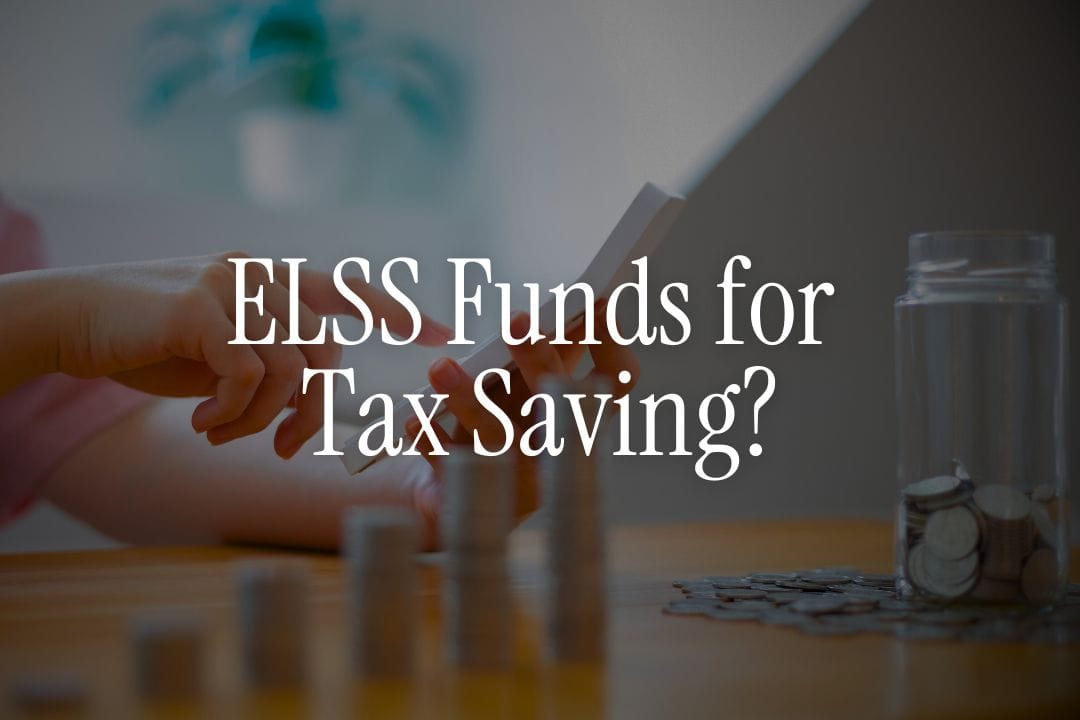
Last month, Rajesh, an IT professional in Dubai, called me frustrated. He was overpaying taxes on his Mumbai rental and freelance income.
His friend mentioned ELSS funds and Section 80C deductions, sparking confusion: "Can NRIs claim these?"
At Belong, we hear this often.
NRIs can invest in ELSS and save up a lot annually, but rules differ.
This guide covers eligibility, benefits, lock-ins, repatriation, and whether ELSS suits you.
The Short Answer: Yes, But With Conditions
Can NRIs invest in ELSS funds? Yes.
Can you claim Section 80C deductions? Yes, up to ₹1.5 lakh per year.
But - and this is important - you can only claim these deductions if you have taxable income in India and you're filing your tax returns under the old tax regime.
The new tax regime, which many residents are switching to, doesn't allow Section 80C deductions. This is a common surprise for NRIs who haven't kept up with India's tax law changes.
👉 Tip: Before investing in ELSS, check if you're liable to file an Income Tax Return in India. Only taxable income in India qualifies for Section 80C deductions.
What Exactly Is ELSS? (A Quick Refresher)
ELSS stands for Equity Linked Savings Scheme - a type of mutual fund that invests at least 80% of its portfolio in equity and equity-related instruments.
Here's what makes ELSS unique:
- Tax benefit: Investments qualify for Section 80C deduction
- Lock-in period: Only 3 years (shortest among all 80C options)
- Return potential: Market-linked returns, historically 10-12% annually
- Flexibility: Can invest lump sum or through SIP
Unlike traditional tax-saving options like PPF (15-year lock-in) or NSC (5-year lock-in), ELSS gives you liquidity sooner. This matters when you're managing finances across borders.
The funds invest across large-cap, mid-cap, and small-cap companies, spreading risk. Some of India's best mutual funds include ELSS options that have consistently outperformed their benchmarks.
Here's the Catch: Who Can Actually Claim Tax Benefits?
This is where many NRIs get confused. Your ability to claim Section 80C benefits doesn't just depend on investing in ELSS - it depends on your residential status under the Income Tax Act.
There are three categories:
1. Resident (ROR - Resident and Ordinarily Resident) If you qualify as a resident (typically spent 182+ days in India during the financial year), you're taxed on your global income. You can claim full Section 80C benefits.
2. RNOR (Resident but Not Ordinarily Resident) This is a transitional status for NRIs who've recently returned to India or visit frequently. RNORs are taxed only on income earned or received in India, similar to NRIs. You can claim Section 80C deductions on your taxable Indian income.
Also Read - Residential Status Under Section 6 Of Income Tax Act
3. Non-Resident (NRI) If you're an NRI (spent less than 182 days in India), only your India-sourced income is taxable. You can claim Section 80C deductions, but only on this Indian income.
Not sure which category you fall into? Use Belong's residential status calculator - it takes under 2 minutes and tells you exactly where you stand.
The key point: ELSS tax benefits only apply to your taxable Indian income. If you don't have income in India (no rental income, no capital gains, no Indian business income), investing in ELSS won't give you tax benefits.
Also Read -Step-by-Step Guide to Converting Resident Account to NRI Account
Section 80C Benefits Explained for NRIs
Under Section 80C of the Income Tax Act, you can claim a deduction of up to ₹1.5 lakh per financial year on your taxable income in India by investing in ELSS funds (ClearTax, 2025).
Let's break down what this means in real numbers:
If you're in the 30% tax bracket and invest the full ₹1.5 lakh, you save ₹46,800 in taxes annually. If you're in the 20% bracket, you save ₹31,200.
Here's an example:
Scenario: Priya, an NRI in Abu Dhabi, earns ₹8 lakh annually from rental income in Bangalore.
- Gross taxable income: ₹8,00,000
- Less: Standard deduction (30% for rental income): ₹2,40,000
- Net taxable income (₹8,00,000 - ₹2,40,000 = ₹5,60,000
Tax Liability calculated without section 80C Deductions:
For net taxable income of ₹5,60,000:
- ₹0 to ₹2,50,000: ₹0 (Nil)
- ₹2,50,001 to ₹5,00,000: 5% of (₹5,00,000 - ₹2,50,000) = 5% of ₹2,50,000 = ₹12,500
- ₹5,00,001 to ₹5,60,000: 20% of (₹5,60,000 - ₹5,00,000) = 20% of ₹60,000 = ₹12,000
- Total tax before cess: ₹12,500 + ₹12,000 = ₹24,500
- Health and Education Cess: 4% of ₹24,500 = 0.04 × ₹24,500 = ₹980
- Total tax liability (including cess): ₹24,500 + ₹980 = ₹25,480
Note 1: No rebate under Section 87A applies as the net taxable income (₹5,60,000) exceeds ₹5,00,000.
Note 2: Tax is calculated according to old tax regime because - the new tax regime offers lower tax rates but removes all deductions under Chapter VI-A, including Section 80C
Tax Liability calculated with section 80C Deductions:
- Section 80C deduction: ₹1,50,000 (ELSS investment, capped at ₹1,50,000 under the old regime)
- New taxable income: ₹5,60,000 - ₹1,50,000 = ₹4,10,000
For net taxable income of ₹4,10,000:
- ₹0 to ₹2,50,000: ₹0 (Nil)
- ₹2,50,001 to ₹4,10,000: 5% of (₹4,10,000 - ₹2,50,000) = 5% of ₹1,60,000 = ₹8,000
- Total tax before cess: ₹8,000
- Health and Education Cess: 4% of ₹8,000 = 0.04 × ₹8,000 = ₹320
- Total tax liability (including cess): ₹8,000 + ₹320 = ₹8,320
Step 4: Calculate Tax Saved
- Tax saved: Tax liability without 80C - Tax liability with 80C
- ₹25,480 - ₹8,320 = ₹17,160
Critical point: This deduction is only available under the old tax regime. The new tax regime offers lower tax rates but removes all deductions under Chapter VI-A, including Section 80C (Bajaj Finserv, 2025).
👉 Tip: Calculate both regimes before deciding. For many NRIs with significant 80C investments, the old regime often works out better despite higher base rates.
Understanding the Lock-In Period and What It Means for You
ELSS funds have a mandatory 3-year lock-in period from the date of investment. This is non-negotiable - you cannot redeem your units before this period, even in emergencies.
What many NRIs don't realize:
For SIP investments, each installment has its own 3-year lock-in. If you start a monthly SIP in January 2025, your first installment becomes redeemable in January 2028, your second in February 2028, and so on.
This is different from tax-saving FDs, where the entire deposit has one lock-in date.
Why does this matter for NRIs? You need to plan your liquidity carefully:
- You're managing finances in two currencies
- Emergency fund access matters more when you're abroad
- Currency exchange rates can fluctuate significantly over 3 years
Compare this to other Section 80C options available to NRIs:
- Life insurance: 5-year to policy maturity (years)
- ULIPs: 5-year lock-in
- Bank FDs (5-year tax-saving): 5-year lock-in
- Home loan principal repayment: No lock-in, but funds are in property
ELSS offers the shortest commitment period. This flexibility is why it's become increasingly popular among NRIs who want tax benefits without tying up funds for too long (ICICI Bank, 2025).
Which Account Should You Use: NRE or NRO?
This is where practical implementation begins. To invest in ELSS as an NRI, you need either an NRE or NRO account.
NRE Account (Non-Resident External)
- For parking foreign earnings in India
- Interest is tax-free
- Fully repatriable (both principal and interest)
- Can be used for ELSS investments
- ELSS returns follow regular capital gains rules (not tax-free like NRE interest)
NRO Account (Non-Resident Ordinary)
- For managing Indian income (rent, dividends, etc.)
- Interest is taxable
- Repatriation limited to USD 1 million per year
- Can be used for ELSS investments
- Subject to TDS on interest
Also Read -How to Repatriate Funds from an NRI Account to Abroad
Most NRIs use NRO accounts for ELSS investments because they're typically investing money earned in India (rental income, business income) that's already sitting in an NRO account.
However, you can invest through either account. The account type affects repatriation, which we'll cover next.
A common question: "Can I use my resident savings account to invest in ELSS?"
No. Once you become an NRI, FEMA regulations require you to convert your resident accounts to NRE/NRO accounts. Using a resident account for fresh investments as an NRI violates FEMA guidelines .
👉 Tip: If you have old ELSS investments from before becoming an NRI, you don't need to redeem them. Inform your AMC about your residential status change and update your KYC to reflect your NRI status.
Step-by-Step: How to Invest in ELSS from Abroad
Investing in ELSS from abroad is simpler than most NRIs expect. Here's the exact process:
Step 1: Ensure your NRI documentation is current
- Valid passport with visa/work permit
- Updated PAN card
- Address proof (overseas address)
- Bank account proof (NRE/NRO passbook or statement)
Step 2: Complete KYC compliance You need to be KYC-compliant to invest in mutual funds. This involves:
- In-Person Verification (IPV) - can often be done via video call now
- FATCA declaration
- Submission of required documents
Most banks for NRI accounts like ICICI, HDFC, and Axis have streamlined this process. You can complete it entirely online without visiting India.
Step 3: Choose your investment route You have three options:
a) Through your NRI bank: HDFC, ICICI, and Axis offer integrated platforms where you can invest directly.
b) Through a mutual fund distributor: Platforms like iNRI, SBNRI, or other AMFI-registered distributors.
c) Direct plans through AMC websites: You can invest directly with the fund house (saves distributor commission, higher returns).
Step 4: Fund your investment Transfer money to your NRE/NRO account if needed. Most platforms allow:
- One-time lump sum investments
- Systematic Investment Plans (SIPs) - monthly, quarterly
- Auto-debit from your NRI account
Step 5: Track and file taxes
- Keep records of your investments
- Note the NAV (Net Asset Value) at purchase
- File ITR claiming Section 80C deductions
- Maintain documentation for TDS compliance
The entire process can be completed in 7-10 days if your documents are ready.
👉 Tip: Some AMCs allow you to link your overseas bank account for direct investment, but this is less common. Check with your chosen fund house about international payment options.
Tax on Returns: What Happens When You Redeem?
This confuses many NRIs. While your investment gets Section 80C deduction, the returns when you redeem are not tax-free.
ELSS funds are equity mutual funds, so redemptions are treated as Long-Term Capital Gains (LTCG) since the lock-in is 3 years.
Current LTCG tax rules (as of 2025):
- Gains up to ₹1.25 lakh per financial year: Tax-free
- Gains above ₹1.25 lakh: Taxed at 12.5%
Example:
You invested ₹1.5 lakh in ELSS in 2022. After 3 years, it grew to ₹2.3 lakh.
- Investment: ₹1,50,000
- Redemption value: ₹2,30,000
- Capital gain: ₹80,000
- Tax liability: ₹0 (below ₹1.25 lakh threshold)
Now, larger scenario:
You've been investing ₹50,000 annually for 6 years. You redeem everything in 2025.
- Total investment: ₹3,00,000
- Redemption value: ₹5,00,000
- Capital gain: ₹2,00,000
- Tax-free threshold: ₹1,25,000
- Taxable gain: ₹75,000
- Tax @ 12.5%: ₹9,375
Compare this to bank FD returns (fully taxed at your slab rate of potentially 30%), and ELSS still comes out ahead.
For NRIs, there's an additional consideration: TDS (Tax Deducted at Source)
When you redeem ELSS units, if the capital gain exceeds ₹1.25 lakh, the fund house will deduct TDS. For NRIs, the TDS rate on LTCG is also 12.5%, but you need to ensure you've submitted Form 15CA and 15CB if applicable (ClearTax).
If your country has a Double Taxation Avoidance Agreement (DTAA) with India (like the UAE-India DTAA), you may be able to claim relief on this tax in your country of residence.
Repatriation Rules for ELSS Investments
Can you bring your ELSS money back to your country of residence after redeeming? This depends on which account you used to invest.
If you invested through an NRE account:
- Fully repatriable with no limit
- Both principal and returns can be transferred abroad
- No additional documentation required beyond standard repatriation forms
- Exchange rate risk applies (₹ to your currency)
If you invested through an NRO account:
- Subject to the ₹1 million per financial year repatriation limit
- This limit is cumulative across all NRO repatriations
- You need to submit Form 15CA/15CB
- Applicable taxes must be paid before repatriation
Here's where it gets tricky:
The ₹1 million limit applies to capital income (which includes redemption of mutual funds). If you have multiple NRO investments - mutual funds, property sale proceeds, FD maturities - they all share this single ₹1 million annual limit (DBS Bank, 2022).
Many NRIs don't realize this until they try to repatriate and hit the cap.
Example:
In FY 2025-26, you:
- Redeem ELSS worth ₹30 lakh
- Sell property with proceeds of ₹50 lakh
- Mature an NRO FD of ₹25 lakh
- Total: ₹1.05 crore
You can only repatriate ₹1 million (~₹8.3 crore at current rates) in that year. The remaining ₹96.7 lakh must be repatriated in subsequent years.
Strategic tip: If you anticipate large repatriations, consider investing through an NRE account from the start. Yes, you'll need to first transfer foreign earnings to India, but you'll avoid repatriation limits later.
Alternatively, you can transfer funds from NRO to NRE (within the ₹1 million limit), and then repatriate from NRE without restrictions (ICICI Bank).
👉 Tip: Plan your repatriation strategy before investing. If you're building a large corpus in India with plans to move it abroad eventually, NRE accounts offer more flexibility.
ELSS vs Other Tax-Saving Options for NRIs
Let's be honest: ELSS isn't the only way to save tax under Section 80C. Here's how it compares to alternatives available to NRIs:
Option | Lock-in | Returns | Tax on Returns | Repatriation | Best For |
|---|---|---|---|---|---|
ELSS | 3 years | 10-12%* | LTCG (12.5% above ₹1.25L) | Depends on account | Growth-focused investors |
Life Insurance | 5+ years | 5-6% | Tax-free u/s 10(10D) | Yes (after maturity) | Family protection + tax saving |
ULIP | 5 years | 8-10%* | Tax-free u/s 10(10D) | Yes | Insurance + investment |
5-Year Bank FD | 5 years | 6-7% | Fully taxable at slab | Capital protection | |
Home Loan Principal | No lock-in | - | Not applicable | Not applicable | Already taking home loan |
*Returns are indicative based on historical data and are not guaranteed
Options NOT available to NRIs:
- Public Provident Fund (PPF)
- National Savings Certificate (NSC)
- Sukanya Samriddhi Yojana
- Post Office schemes
These are restricted under FEMA regulations, despite offering excellent returns. Many NRIs discover this only when they try to invest.
Why ELSS stands out:
- Shortest lock-in (3 years vs 5+ for alternatives)
- Potential for inflation-beating returns
- Professionally managed by expert fund managers
- Diversification across multiple companies
- Lower taxation compared to bank FDs
Why ELSS might not be ideal:
- Market-linked, no guaranteed returns
- Requires understanding of equity markets
- Rupee depreciation risk for NRIs planning to repatriate
- Only useful if you have taxable income in India
Why Many NRIs Are Looking at GIFT City Alternatives
Here's something most articles won't tell you: while ELSS is useful for Section 80C deductions, it's not always the best investment choice for NRIs.
Why?
Rupee depreciation risk: You're investing in INR, but your expenses are in USD/AED/GBP. If the rupee weakens (which it has historically), your real returns shrink when converted back.
Repatriation complexity: As we discussed, NRO investments face limits. Multiple forms, CA certificates, bank approvals.
Tax efficiency: Even with 80C benefits, you're still exposed to TDS and capital gains tax.
This is why we built Belong around GIFT City investments.
GIFT City (Gujarat International Finance Tec-City) offers:
- USD-denominated and other foreign currency fixed deposits: Earn in dollars, avoid rupee risk. The interest earned on these deposits is generally tax-exempt in India. (source)
- Tax-free returns: Interest is completely exempt from Indian income tax
- Simplified repatriation: Funds are in foreign currency, easier to move
- IFSC regulatory oversight: Licensed and regulated environment
- No TDS compliance: Cleaner tax filing
Yes, you won't get Section 80C deductions on GIFT City FDs. But if your goal is wealth preservation with stable returns rather than tax deduction, GIFT City FDs might make more sense.
Example comparison:
Option A: ELSS
- Invest ₹10 lakh
- Save ₹46,800 in tax (30% bracket, ₹1.5L investment)
- Potential return: 12% over 3 years
- Value after 3 years: ₹14.05 lakh
- Tax on gains: ₹0 (below ₹1.25L threshold)
- Net: ₹14.05 lakh in INR
- Convert to USD (assuming ₹83 rate): ~$16,928
- But: If rupee depreciates to ₹90, you get $15,611
Option B: GIFT City USD FD
- Invest $12,000 (equivalent ₹10 lakh)
- No tax deduction upfront
- Interest: 5% per year, tax-free
- Value after 3 years: $13,891
- No rupee risk, no conversion uncertainty
Which is better depends on your situation. If you have significant taxable income in India and plan to stay invested in INR, ELSS works. If you're building wealth in dollars and want to avoid currency risk, GIFT City makes sense.
You can explore both options on the Belong app. We've designed tools like the FD Comparison Tool to help you evaluate NRE, NRO, FCNR, and GIFT City options side-by-side.
Common Mistakes NRIs Make with ELSS
Over the years, I've seen NRIs repeat the same ELSS mistakes. Here are the top ones:
1. Investing without checking residential status
Many NRIs invest assuming they'll get tax benefits, only to discover during ITR filing that they don't have taxable income in India. Use our residential status calculator before investing.
2. Choosing the new tax regime
The new tax regime seems attractive with lower rates, but it eliminates Section 80C benefits. If you've already invested in ELSS, you've lost the primary reason for choosing it.
Also Read -Old Tax Regime Vs New Tax Regime - What Should NRIs Choose
3. Not updating KYC after moving abroad
Continuing to invest through your old resident account violates FEMA. Your transactions could be flagged, and you may face penalties.
4. Ignoring repatriation limits
Investing heavily in ELSS through NRO accounts without realizing you can only repatriate $1 million per year. This creates liquidity issues.
Also Read -How to Repatriate Funds from NRO/NRE Accounts
5. Picking funds based only on past returns
The best ELSS fund last year might not be the best this year. Look at consistency, fund manager track record, expense ratio, and portfolio composition. Our guide on best mutual funds can help.
6. Not filing ITR even with deductions
You must file your Indian tax return to claim Section 80C benefits. Missing the deadline means losing the deduction permanently for that year. Know your NRI tax filing deadlines.
7. Panic selling after lock-in ends
Just because the 3-year lock-in is over doesn't mean you should redeem. If the fund is performing well and you don't need the money, staying invested can compound your wealth.
Who Should (and Shouldn't) Invest in ELSS?
ELSS makes sense if you:
- Have taxable income in India (rent, interest, capital gains, business income)
- Are filing ITR under the old tax regime
- Have a 3-5 year investment horizon
- Are comfortable with equity market volatility
- Want the shortest lock-in among 80C options
- Don't need to repatriate this money immediately
Consider alternatives if you:
- Have no taxable income in India (then ELSS offers zero tax benefit)
- Are filing under the new tax regime (no Section 80C benefit)
- Need liquidity within 3 years
- Want capital protection and guaranteed returns
- Plan to repatriate large sums soon (GIFT City might be better)
- Are risk-averse and can't handle 15-20% market fluctuations
A practical decision framework:
Step 1: Calculate your taxable income in India
- Use our NRI tax guide to determine this
Step 2: Determine if Section 80C benefit is meaningful
- If your tax outgo is less than ₹20,000, the benefit might not justify the complexity
Step 3: Assess your rupee vs dollar preference
- If you think long-term in dollars, ELSS exposes you to currency risk
Step 4: Evaluate your time horizon
- Less than 3 years? Don't invest in ELSS (lock-in)
- 3-5 years? ELSS is suitable
- 5+ years? Consider combining ELSS with other equity mutual funds
Step 5: Check your overall Section 80C utilization
- Are you already maxing out 80C through life insurance, home loan principal, or children's tuition fees?
- If yes, additional ELSS investment won't add tax benefit
For personalized guidance based on your specific situation, join our NRI community on WhatsApp. We have separate groups for tax queries, investment discussions, and UAE-specific questions.
Final Thoughts: Is ELSS Right for You?
ELSS can be a powerful tax-saving tool for NRIs - but only if your situation aligns with its benefits.
If you have stable Indian income, plan to hold investments for 3-5 years, and are filing under the old tax regime, ELSS deserves a place in your portfolio. The combination of tax deduction, relatively short lock-in, and potential for inflation-beating returns makes it attractive.
But here's what I tell NRIs at Belong: don't let the tax tail wag the investment dog.
If you don't have taxable income in India, or if you're building wealth primarily in dollars, or if you need greater liquidity and capital protection, there are better alternatives. GIFT City investments, international diversification through AIF funds, or simply optimizing your overseas portfolio might serve you better.
The best financial decisions come from understanding all your options, not just following what "everyone does."
We built Belong to help NRIs make these decisions with confidence. Whether it's comparing NRI FD rates, understanding capital gains tax, or exploring DTAA benefits, our tools and community are designed to simplify your financial life.
Ready to take the next step?
👉 Download the Belong app to compare ELSS with other investment options
👉 Join our WhatsApp community to connect with other NRIs and get your questions answered
👉 Explore GIFT City fixed deposits as a tax-efficient alternative
Your financial future deserves more than guesswork. Let's build something smarter together.
Also Read - What Happens to Mutual Funds If You Return to India (RNOR → Resident)
Disclaimer: This article is for informational purposes only and should not be considered financial or tax advice. Tax laws and investment regulations change frequently. Please consult with a qualified tax advisor or financial planner before making investment decisions. Belong does not guarantee returns on any investment and is not responsible for any losses incurred based on information provided in this article.
Sources:
- ClearTax. (2025). "Section 80C of Income Tax Act - 80C Deduction List" -
- ICICI Bank. (2025). "ELSS Mutual Funds" -
- Bajaj Finserv. (2025). "Section 80C of Income Tax Act"
- DBS Bank. (2022). "The Meaning of NRI Repatriation"
- ICICI Bank. "A-Z of NRE Account"
- Axis Bank. "What Is NRI Repatriation?"




